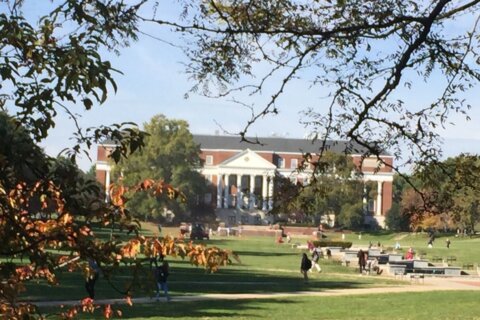JEJU, South Korea — How do Koreans — Northern and Southern — feel when tensions flare?
“Ugh, maybe we should get it over with and have a war,” a North Korean said to me over lunch in Pyongyang. “Living like this is too stressful.” This was in spring of 2016 when after a nuclear test and round of U.N. sanctions a mini-crisis was brewing. War rhetoric was amped up and Kim Jong Un was defiantly shooting missiles into the sea.
That was the second time I’d heard such a sentiment from a North Korean during that month. This summer too, no doubt many North Koreans are stressed, wondering if actual fighting will finally break out again in their country.
“Who do you think would win if the U.S. and the D.P.R.K. went to war?” I cautiously asked back then, using the abbreviation of Democratic People’s Republic of Korea.
“I guess … we would,” he said unenthusiastically.
“I dunno, the U.S. has a pretty powerful military.” We let our eye contact wander and the conversation peter out. It had quickly become too awkward. I poured more beer into our stemmed glasses.
North Koreans are to some extent kept on edge all the time, living in a garrison state. Kim Jong Un’s grandfather and founder of the D.P.R.K., Kim Il Sung, chose in the early 1960s to rapidly militarize the state and society, investing huge resources into the Korean People’s Army and infusing a deep us-against-the-world mentality into the culture.
[READ: These countries control the world’s nearly 15,000 nuclear weapons.]
Pyongyang tends to keep the perception of an outside threat fairly constant, though tamps it down or ramps it up from time to time. This consistency can lead to a sense of banality to the crisis. In spring 2013 I also spent some time in North Korea when Kim put his armed forces on a semi-state of war footing and “tore up the armistice” that ended the Korean War in July 1953. Meanwhile, kids were still rollerblading in parks all over Pyongyang, commuters rushed to and from work, and elderly men went fishing on the Taedong River.
There were just a few indicators of geopolitical tensions. Newsreaders and their statements became more frequent and impassioned. Propaganda posters became more aggressive. At one point I saw a locomotive with camouflage netting on it. There were a few fake leaves on the netting in what was passing, I suppose, for a militarized train.
During the crisis that unfolded in February and March of 2013 Kaesong Industrial Complex (KIC) — a joint North-South manufacturing facility just north of the inter-Korean border – kept humming along. This added to a sense of normalcy for Pyongyangers, allowing them to dismiss the harsh rhetoric. This was because Kaesong was a moneymaker for the North Korean state, using North Korean laborers in South Korean factories to earn hard currency. In April of that year as the crisis dragged on, however, Pyongyang unilaterally shut the KIC down. North Koreans then started to express concern; the rhetoric suddenly seemed more serious.
Sacrificing the KIC certainly conveyed that Pyongyang was willing to suffer. After tensions eventually abated , North and South Korea spent several months negotiating Keasong’s re-opening. During last year’s crisis, the Park Geun-hye government in Seoul also unilaterally shut down the complex, citing its profits as funding Pyongyang’s nuclear and missile programs. It remains shuttered, a mostly failed attempt to bridge the economies of the two Koreas.
Forty miles south of the KIC is Seoul itself, heart of a metropolitan region home to nearly half of South Korea’s 51 million people. There, people have approached this year’s crisis the way they did in 2016 and 2013 (as well as in 2002, 2009 and 2010, for example): with remarkable indifference.
World media loves to show South Koreans congregated around big flat-screen televisions, absorbing bad news about North Korean missiles or nukes in groups. This preferred shot is in Seoul Station, where people are gathered around because they’re waiting for trains. Another angle would reveal greater numbers playing games or watching dramas on their phones.
Interestingly, North Korean media has borrowed this trick. Just before the London 2012 Olympics , the authorities installed a big screen outside Pyongyang Station. Korean Central News Agency broadcasts now show people gathered around that screen too during times of international crisis, appearing to pensively watch. They are waiting for trains, too.
In South Korea during times like these people who are interested in current events do discuss North Korea and consume more news about it, but one gets the sense that very few genuinely believe a catastrophe is possible. I often explain it to Californians as the situation being similar to living with the threat of “the big one,” like the 1906 San Francisco earthquake. It is possible. Tremors and smaller quakes are reminders of that fact, but one never quite believes it is around the corner. Certainly, it doesn’t affect how Californians approach daily life.
Moreover, for South Koreans, particularly younger ones, the country north of the DMZ has become something of an abstraction. Those 40 miles between the border and Seoul might as well be 10,000. For many, it is hard to imagine a country with which they have no cultural exchange, where they personally know no people and can never visit, would be able to disrupt their lives in a dramatic fashion.
Unlike in North Korea, however, we don’t have to rely merely on anecdotes: Public opinion polls are regularly conducted in the South. A Gallup Poll in early August — well into this crisis, but before U.S. President Donald Trump’s “fire and fury” comment — found that only 32 percent of people thought war was increasingly possible. Fully 60 percent said it was not more likely than before.
A poll conducted by the newspaper Joongang Ilbo on Aug. 14 and 15, after Trump’s incendiary rhetoric, found 58.6 percent of respondents still unworried that real fighting would break out, with only 36.5 percent saying it was possible. That poll also found that younger people were more worried about war, with 45.8 percent of people in their 20s responding that they thought a crisis was possible. Older Koreans have seen more crises come and go and appear to have greater faith that this one will be navigated safely.
My lunch partner in Pyongyang will also be hoping that the 64-year-old cease-fire holds and that this crisis will soon pass, despite the ongoing stress these tensions cause him. I think he knows North Korea wouldn’t win. Indeed, Koreans on both sides of the border know that no one would win in a 21st-century version of the Korean War.
More from U.S. News
Decoding North Korea’s Propaganda Paintings
Kazakhstan Offers a Model to Resolve North Korea Nuclear Arms Standoff
Koreans in Both the North and South Used to Living in Crisis originally appeared on usnews.com







